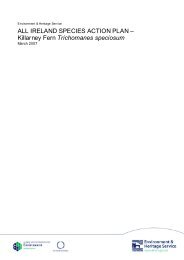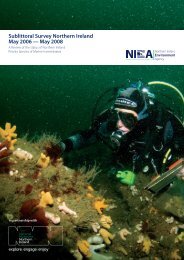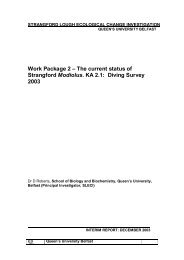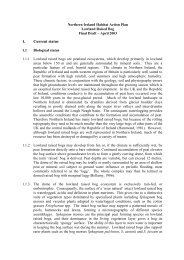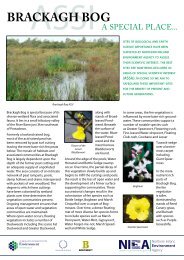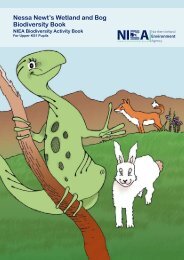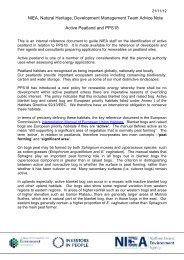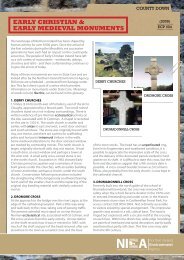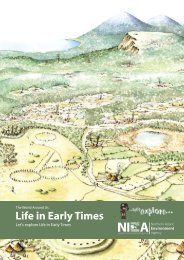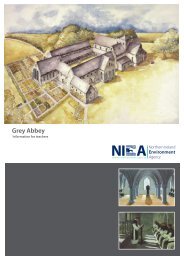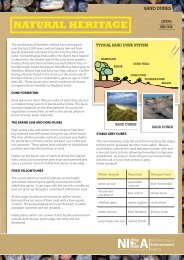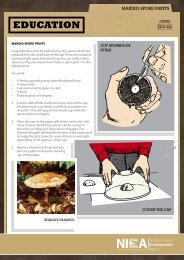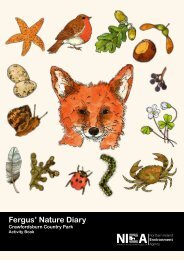Binevenagh Nature Reserve Information for Teachers (.PDF 0.97
Binevenagh Nature Reserve Information for Teachers (.PDF 0.97
Binevenagh Nature Reserve Information for Teachers (.PDF 0.97
Create successful ePaper yourself
Turn your PDF publications into a flip-book with our unique Google optimized e-Paper software.
www.ni-environment.gov.uk<br />
Birds and Mammals<br />
The cliffs above the reserve provide nesting sites <strong>for</strong><br />
some of our more spectacular birds: the peregrine<br />
falcon, the raven and the buzzard. The peregrine and<br />
the buzzard are both birds of prey. They have sharp<br />
claws called talons <strong>for</strong> catching their prey. They use their<br />
sharp curved beaks to tear up their food. The raven is<br />
the largest of the crow family. These birds all use the<br />
cliffs to nest.<br />
In early summer you will also see fulmars nesting on the<br />
cliff ledges. The fulmar looks like a seagull, but actually<br />
belongs to a different group called tubenoses. They are<br />
more closely related to petrels and albatrosses.<br />
Peregrine Falcon<br />
Raven<br />
Buzzard<br />
<strong>Binevenagh</strong> <strong>Nature</strong> <strong>Reserve</strong><br />
The fulmars have long thin wings which allow them<br />
to glide ef<strong>for</strong>tlessly over long distances. They spend<br />
all their lives out at sea either flying or swimming.<br />
Their feet are webbed allowing them to swim easily,<br />
but they can hardly walk at all. They rarely come to<br />
land except to breed.<br />
On the grassland below we may see meadow pipits<br />
and wheatears. The most obvious wild mammal on<br />
the reserve is the rabbit. Some of them are peculiar<br />
colours ranging from black through the normal brown<br />
to almost blonde.<br />
Fulmar<br />
Wheatear<br />
Rabbit<br />
6



